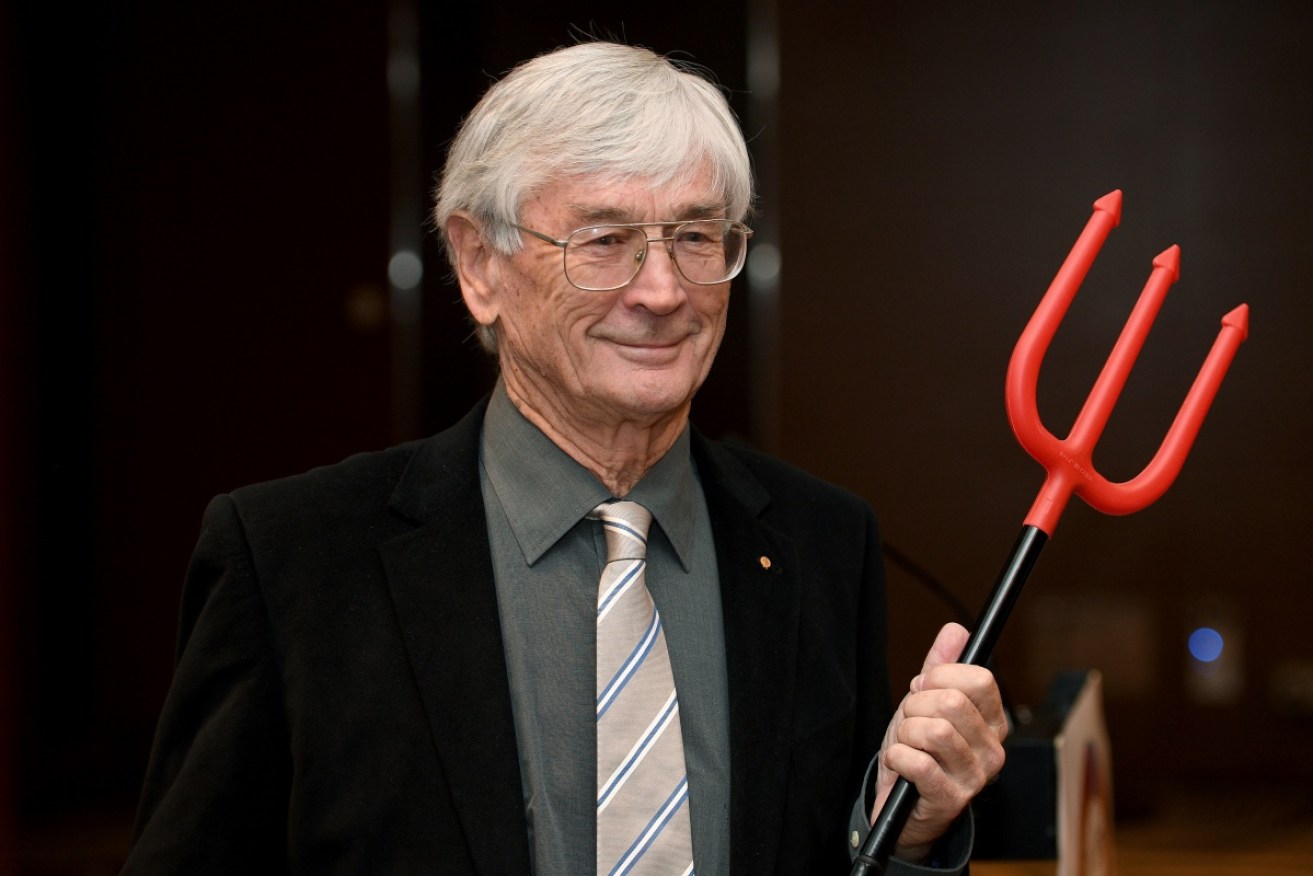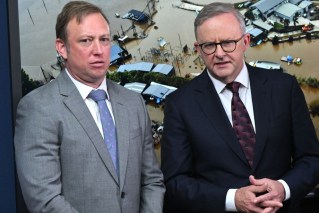Dick Smith’s anti-immigration message has potential to damage the economy


Population campaigner Dick Smith launching his new ads this week. Photo: AAP
Former electronics entrepreneur Dick Smith launched another anti-immigration campaign this week, claiming to be tackling a vital issue that the media is wilfully ignoring.
However, by approaching the topic with the same oversimplifications contained in his 2010 documentary Dick Smith’s Population Puzzle, Mr Smith is introducing further risk to our vulnerable economy.
That risk comes through stoking the kind of populist fears being spread by Canberra crossbenchers, including Pauline Hanson’s One Nation Party, and independents Cory Bernardi and Bob Katter.
Those politicians, like Mr Smith, link population growth to urban congestion, soaring house prices or the threat of terrorism.
And because their arguments operate at an emotional level, like Mr Smith’s wildly over-the-top ad, they have little to say about the real economics of population growth.
Focus on real causes
Urban congestion results from poor town planning and inadequate transport infrastructure, soaring house prices are primarily driven by ridiculous tax laws and record-low interest rates, and terrorism has little or nothing to do with immigration rates.
But those arguments are too difficult, it would seem. Just slash immigration and everything will be great!
Actually, if the crossbenchers could extract such a promise from either major party, we’d be in a lot of trouble.
While immigration is not the main driver of house price inflation – the number of residents per dwelling in Australia has remained virtually unchanged since the housing boom began – a sudden collapse in demand would not gently cool the market. It would crash the market and precipitate a long recession.
What the numbers really reveal
Moreover, attacking headline ‘net overseas migration’ figures is pretty meaningless according to James Raymer, Professor in the School of Demography at the Australian National University.
It is far more useful, he told The New Daily on Wednesday, to look at individual components of the net figure.
For instance, when the Aussie dollar was sky-high in 2011-12, 74,000 students arrived in Australia and 48,000 departed – giving a net figure of 26,000.
Last year, 150,000 arrived and only 25,000 left – which is a ‘surge in immigration’ but also an ‘education exports boom’.
As a former university lecturer, I know first-hand that the education exports sector is fraught with problems – the cash cow of overseas students can end up trampling teaching quality, for instance.
But that would be a real issue to debate, rather than ignoring the economic advantage hidden beneath the net migration figures.
As the chart below shows, there are other questions that need asking beyond the headline numbers:
- Farmers are crying out for working-holiday-visa workers, but are those workers being exploited?
- 457 visa holders by definition have jobs, but are they being ripped off?
- What’s the economic gain to Australia of permanent skilled migrants, and are they being matched with productive investment?
Those debates would make a lot more sense than Mr Smith’s assertions.
At the launch of the campaign he claimed: “At the present growth rate of 1.78 per cent, we’ll have 100 million in Australia at the end of this century.”
Umm, no we won’t. The current growth rate is 1.6 per cent, based on ABS figures, and nobody has suggested that the total could ever rise that high.
“Our birth rate is about replacement level,” claimed Mr Smith.
Actually, Australia’s fertility rate is 1.8 births per woman. It has been below the replacement rate of 2.1 since 1976, according to the ABS.
Australians are living longer, so the net effect of ‘natural increase’ is positive – just over 40 per cent of Australia’s population growth is due to natural increase.
The other component of growth, net overseas migration, is what Mr Smith is calling for to be slashed. But not to 70,000.
The Department of Immigration and Border Protection estimates that in the 2016-17 financial year, net overseas migration was 257,000 people – down from the 2008-09 peak of 300,000, but a lot higher than the 143,000 when the mining boom was getting underway in 2004-05.
As he did seven years ago, Mr Smith is skating over important facts in his rush to generate populist attention.
He might succeed. But if he does, he’ll be smashing large parts of the economy as he goes.








